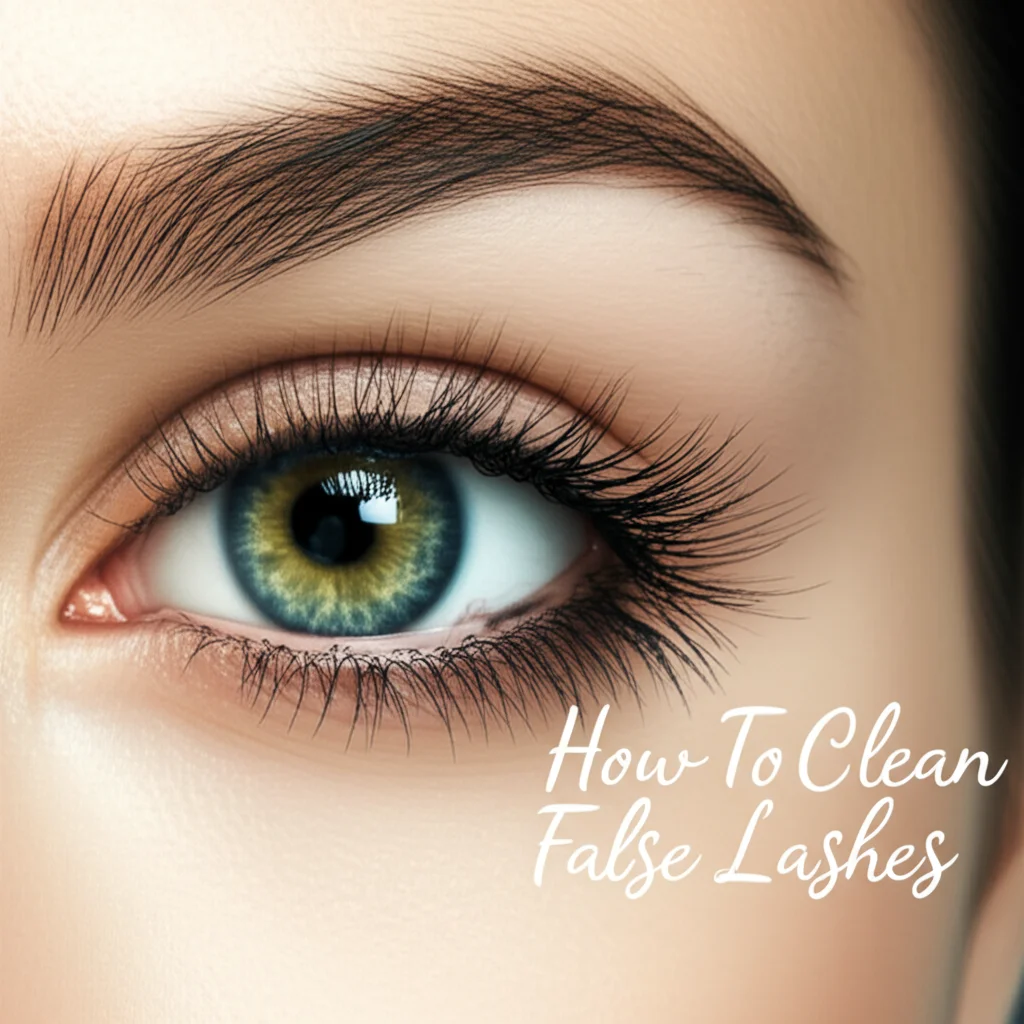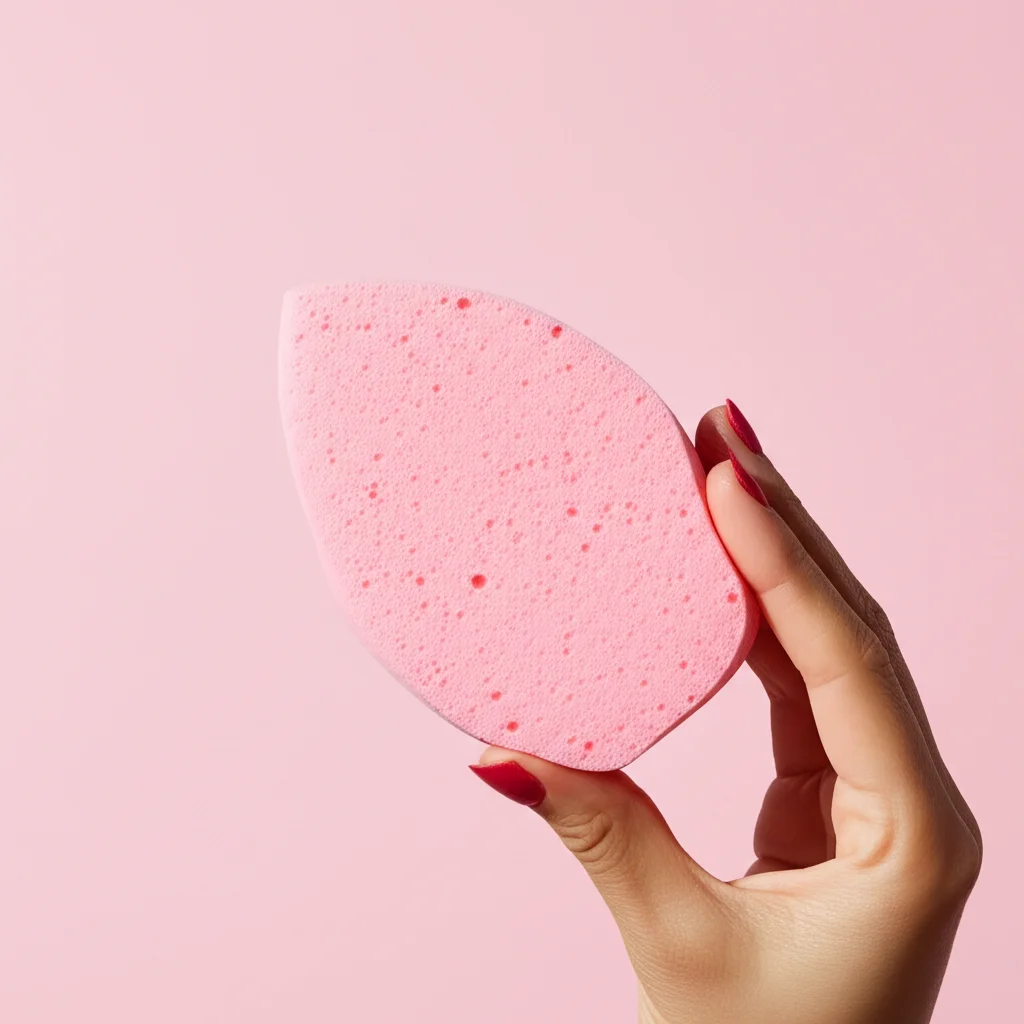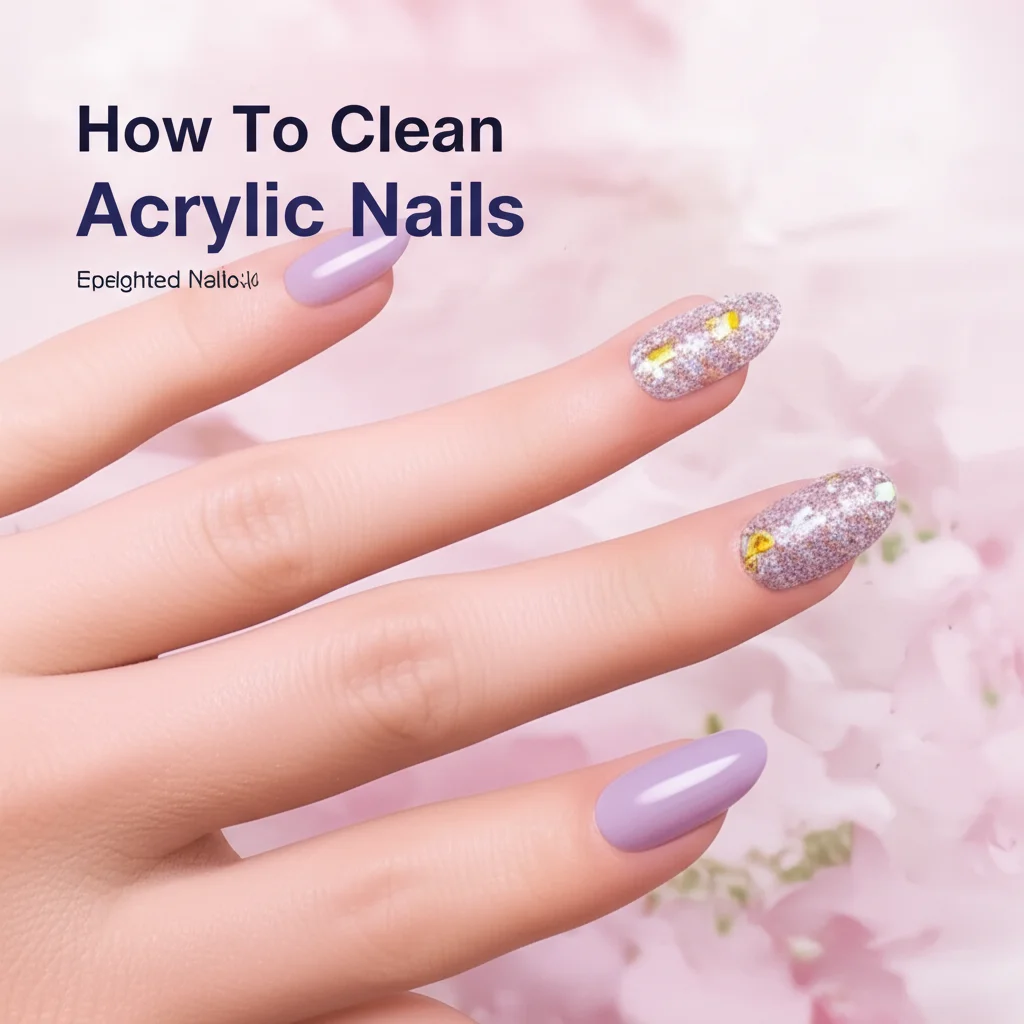· Todd Martin · Beauty & Personal Care · 14 min read
How To Clean Your Eyelashes

Keep Your Lashes Clean: A Simple Guide
Your eyelashes are more than just a frame for your eyes. They act as a protective barrier, shielding your eyes from dust, debris, and irritants. Just like your hair and skin, your eyelashes need regular cleaning. Neglecting to clean your eyelashes can lead to various problems, including irritation, infections, and even lash loss. This article provides a comprehensive guide on how to clean your eyelashes properly. I will explain product choices, step-by-step methods, and important care tips. You will learn how to maintain healthy and clean lashes every day.
Takeaway:
- Regularly clean your eyelashes to prevent irritation and infection.
- Use gentle, eye-safe cleansers designed for lash hygiene.
- Always remove makeup thoroughly before bed.
- Handle your lashes with care to avoid damage.
- Consult a doctor for persistent eye irritation or signs of infection.
How to clean your eyelashes? To clean your eyelashes, gently wash them daily with a mild, pH-neutral, eye-safe cleanser or baby shampoo. Use your fingertips or a soft, clean brush to softly massage the lash line. Rinse thoroughly with lukewarm water and pat dry with a clean towel. This removes dirt, oil, and makeup.
Understanding Why Clean Eyelashes Matter for Eye Health
Clean eyelashes are important for overall eye health. Your eyelashes gather dust, pollen, makeup residue, and natural oils throughout the day. These particles can build up along the lash line. This buildup creates an environment where bacteria and mites can thrive. Such conditions can lead to discomfort and serious eye conditions.
One common issue is blepharitis, an inflammation of the eyelids. This condition often results from clogged oil glands at the base of the eyelashes. Symptoms include itchy, red, swollen eyelids, crusty lashes, and a gritty feeling in the eyes. Regular cleaning helps prevent these glands from becoming blocked. It also washes away irritants that can trigger inflammation. Keeping your lashes clean also reduces the risk of styes and chalazia, which are painful lumps that form when oil glands become infected or blocked. By taking a few minutes each day to clean your eyelashes, you protect your eyes from common irritations and more severe problems. It also helps your natural lashes stay strong and healthy, preventing premature shedding. This simple step is a vital part of daily personal hygiene, ensuring your eyes remain comfortable and free from harm.
Choosing the Right Products for Gentle Eyelash Cleaning
Selecting the correct cleaning products is very important when you clean your eyelashes. The skin around your eyes is sensitive. You need gentle formulas that do not cause irritation. Harsh soaps or cleansers can strip natural oils, leading to dryness or allergic reactions. I always recommend using products specifically formulated for the eye area.
Many eye doctors suggest using a mild, pH-neutral cleanser. Baby shampoo is a popular and affordable option; dilute it with water to make it even gentler. You can also find specialized eyelid cleansers or foaming lash cleansers. These products are often tear-free and designed to be safe if they enter your eyes. Look for cleansers that are free from parabens, sulfates, and artificial fragrances. These ingredients can cause irritation or allergic reactions in some people. Micellar water is another good choice for makeup removal, especially for waterproof mascara, but it should be rinsed off afterwards. Remember, the goal is to clean effectively without causing dryness or irritation. Always check the ingredients list and choose products labeled “hypoallergenic” or “ophthalmologist-tested” for best results. Using the right products ensures your lashes get clean without damaging your delicate eye area.
Step-by-Step Guide: How to Clean Your Natural Eyelashes
Cleaning your natural eyelashes is a simple process that fits into your daily routine. Doing this helps maintain eye health and keeps your lashes looking their best. I follow a gentle, consistent approach. You should do this daily, especially at night to remove makeup and buildup from the day.
Here is a step-by-step guide to properly clean your natural eyelashes:
- Wash Your Hands: Start by thoroughly washing your hands with soap and water. Clean hands prevent the transfer of dirt and bacteria to your eyes.
- Remove Eye Makeup: If you wear eye makeup, remove it first. Use a gentle eye makeup remover or micellar water. Apply it to a cotton pad and gently wipe over closed eyelids and lashes. Avoid harsh rubbing, which can pull out lashes. Ensure all mascara, eyeliner, and eyeshadow are gone.
- Prepare Your Cleanser: Dispense a small amount of your chosen cleanser (like diluted baby shampoo or a specialized lash cleanser) onto your clean fingertips. You only need a pea-sized amount.
- Gentle Application: Close your eyes. Gently massage the cleanser along your lash line, both upper and lower, using small circular motions. Be very careful not to get soap directly into your eyes. Focus on the base of the lashes where oils and debris accumulate.
- Rinse Thoroughly: Rinse your eyes with lukewarm water. You can splash water onto your closed eyes or use a clean washcloth dampened with water. Make sure all traces of the cleanser are gone. Residue can cause irritation.
- Pat Dry: Gently pat your eyelids and lashes dry with a clean, soft towel. Avoid rubbing. Your lashes are delicate when wet.
- Optional: Lash Brush: Once dry, you can use a clean, spooled brush to gently comb through your lashes. This helps to separate them and removes any lingering debris.
This routine, done daily, makes a big difference for your eye comfort and lash health. Consistency is key to preventing problems.
Special Care: Cleaning Eyelashes with Extensions and Falsies
Caring for eyelashes with extensions or falsies requires extra attention. These types of lashes, while beautiful, need specific cleaning methods to prevent damage and maintain hygiene. My approach emphasizes gentleness and specialized products. Regular cleaning is even more important for extensions and falsies. Buildup can loosen the adhesive or cause infections.
Cleaning Permanent Eyelash Extensions
Eyelash extensions are delicate and bond to your natural lashes with adhesive. Improper cleaning can cause them to fall out prematurely.
- Use an Extension-Safe Cleanser: Opt for an oil-free, foam lash cleanser specifically designed for extensions. Oil-based products dissolve the adhesive.
- Gentle Application: Wet your face with lukewarm water. Pump a small amount of foam cleanser onto your clean fingertips or a soft lash brush. Gently brush or massage the foam along your lash line and extensions. Move downwards, from the base to the tips, without rubbing side-to-side.
- Rinse Carefully: Rinse with cool water, either by splashing gently or using a soft, damp cloth. Ensure no cleanser remains.
- Pat and Air Dry: Gently pat your face dry with a clean towel. Avoid rubbing your eyes. Allow your lashes to air dry completely.
- Brush: Once dry, use a clean, soft spoolie brush to gently comb through your extensions. This helps keep them separated and fluffy. Avoid brushing when wet.
Remember, keeping these lashes clean helps them last longer and prevents eye irritation.
How to Clean Fake Eyelashes
Reusable strip lashes or individual falsies also need cleaning after each use. This extends their life and keeps them hygienic. I have found this method effective. If you want a more detailed guide for this specific type of lash, you can also learn more about how to clean fake eyelashes.
- Peel Off Gently: After wearing, carefully peel the fake lashes from your eyelids, starting from the outer corner.
- Remove Glue: Gently pick off any visible glue residue from the lash band using your fingers or a clean pair of tweezers. Do this carefully to avoid tearing the lash.
- Cleanse: Place the lashes on a clean paper towel. Dip a cotton swab or a small brush in oil-free makeup remover or micellar water. Gently wipe along the lash band and through the lashes to remove mascara and eyeliner. Do not soak the lashes.
- Rinse (Optional): If using micellar water, you can lightly rinse them under cool, running water. Be very quick.
- Dry and Store: Lay them flat on a clean paper towel to air dry. Once completely dry, store them in their original case or a clean lash tray to maintain their shape.
Proper cleaning ensures your fake lashes look good for many uses.
Caring for Magnetic Eyelashes
Magnetic eyelashes are a newer innovation and also require proper care to maintain their integrity. Their cleaning process is unique because of the magnets. For more in-depth instructions, you can find a dedicated guide on how to clean magnetic eyelashes.
- Remove Gently: Carefully remove magnetic lashes by gently separating the magnetic strips. Avoid pulling directly on the lashes.
- Clean Magnets and Band: Use a dry cotton swab to gently wipe away any magnetic liner residue from the tiny magnets and the lash band. Do not use oil-based removers on the magnets or lash band itself, as this can degrade them.
- Clean Lashes: If mascara or eyeliner is on the lash fibers, use a very small amount of oil-free micellar water on a fresh cotton swab. Gently wipe the lash fibers. Avoid saturating the magnets.
- Air Dry and Store: Lay the magnetic lashes on a clean paper towel to air dry completely. Store them in their magnetic case or a dedicated lash tray to protect the magnets and maintain their shape.
By following these specific cleaning instructions, you ensure your special lashes remain beautiful and hygienic.
Daily Habits for Maintaining Clean Eyelashes
Establishing good daily habits is just as important as the cleaning process itself. Consistent routines prevent buildup and promote long-term eye health. I find that a few simple steps integrated into my daily life make a big difference. These habits are crucial for everyone, whether you wear makeup or not.
First, always remove all eye makeup before going to bed. Sleeping with mascara or eyeliner can clog follicles and lead to irritation or infection. Use a gentle, dedicated eye makeup remover. Ensure every trace of product is gone. Second, avoid rubbing your eyes excessively. Rubbing can dislodge lashes and introduce dirt or bacteria from your hands. If your eyes itch, try a cool compress or an eye drop specifically for irritation. Third, consider your pillowcases. They collect oils, dust, and makeup. Change your pillowcases regularly, at least once a week, to reduce the transfer of contaminants to your eyes and lashes while you sleep. Fourth, replace your eye makeup products frequently. Mascara, eyeliner, and eyeshadow can harbor bacteria over time. Replace mascara every three months, and liquid eyeliner every six months. This prevents bacteria from transferring to your lashes and eyes. Finally, always wash your hands before touching your eyes or applying any products. This fundamental hygiene step prevents the spread of germs. Practicing these habits regularly supports your overall eye hygiene and helps keep your eyelashes clean and healthy. It aligns with general principles for how to keep your body clean and maintaining a hygienic home environment.
Common Mistakes to Avoid When Cleaning Eyelashes
Even with good intentions, people can make mistakes when cleaning their eyelashes. These errors can cause more harm than good, leading to irritation, damage, or infection. I have learned to identify common pitfalls and how to avoid them. Knowing what not to do is as important as knowing what to do.
One frequent mistake is using harsh soaps or cleansers. Regular face washes, body soaps, or even some makeup removers contain ingredients that are too strong for the delicate eye area. They can cause dryness, irritation, or allergic reactions. Always use products specifically formulated for eye hygiene. Another common error is rubbing your eyes too hard. Vigorous scrubbing can pull out lashes, cause breakage, or irritate the sensitive skin around your eyes. Always use gentle, light motions when cleaning. Applying too much pressure can also lead to premature aging of the delicate skin. Not rinsing thoroughly is another pitfall. Cleanser residue left on the lashes or eyelids can cause irritation, dryness, or a sticky feeling. Always rinse your eyes completely with lukewarm water until all product is gone. Using dirty tools, like an old cotton pad or an unwashed spoolie brush, introduces bacteria to your eyes. Always use clean applicators and wash reusable tools regularly. Lastly, neglecting to clean lashes daily is a major mistake. Buildup of oil, dirt, and makeup provides a breeding ground for bacteria. Skipping daily cleaning can lead to infections or conditions like blepharitis. Avoid these common mistakes to keep your eyelashes healthy and your eyes comfortable.
When to Seek Professional Advice for Eyelash Concerns
While daily cleaning helps keep your eyelashes healthy, sometimes issues arise that need professional attention. Recognizing when to seek help from a doctor is very important. I always advise people to listen to their body and not ignore persistent symptoms. Your eye health is a sensitive matter.
If you experience persistent redness, swelling, itching, or pain around your lash line, you should see an eye doctor. These symptoms could indicate an infection, severe inflammation, or an allergic reaction. Home remedies or continued self-cleaning might not be enough. If you notice a discharge from your eyes, especially if it is thick or discolored, this is a clear sign of infection that needs medical treatment. Lumps or bumps that form on your eyelid, like styes or chalazia, might require specific treatments, including prescription eye drops or even a minor procedure from a doctor. Sudden or excessive lash loss that is not related to normal shedding also warrants a visit to a professional. This could be a symptom of an underlying health condition. If your vision becomes blurry, or if you experience light sensitivity along with your eyelash symptoms, seek immediate medical attention. A healthcare professional can diagnose the exact problem and prescribe the correct treatment. They can also provide personalized advice on your lash care routine. Early intervention can prevent minor issues from becoming more serious problems.
Frequently Asked Questions
Q1: How often should I clean my eyelashes? A1: You should clean your eyelashes daily, ideally every night. This routine removes makeup, oil, dirt, and debris that accumulate throughout the day. Daily cleaning helps prevent infections, irritation, and conditions like blepharitis. Consistency is key for maintaining good eye hygiene and healthy lashes.
Q2: Can I use regular soap to clean my eyelashes? A2: No, avoid using regular soap to clean your eyelashes. Most soaps contain harsh chemicals, fragrances, and dyes that can irritate your eyes and the delicate skin around them. Always use a mild, pH-neutral cleanser specifically designed for the eye area, such as diluted baby shampoo or an ophthalmologist-tested lash cleanser.
Q3: Is it okay to rub my eyelashes vigorously while cleaning? A3: No, it is not okay to rub your eyelashes vigorously. Harsh rubbing can pull out natural lashes, damage extensions, and irritate the sensitive skin around your eyes. Always use gentle, light, circular motions when cleaning. This gentle touch ensures effective cleaning without causing harm or premature lash loss.
Q4: What happens if I don’t clean my eyelashes? A4: If you do not clean your eyelashes regularly, dirt, oil, makeup residue, and dead skin cells can build up. This buildup can lead to various problems. These include eye irritation, redness, itchiness, and conditions like blepharitis or styes. It can also create a breeding ground for bacteria and mites.
Q5: Can I clean my eyelashes with just water? A5: While rinsing with water is part of the cleaning process, water alone is not enough to effectively clean your eyelashes. Water cannot remove oil, waterproof makeup, or sticky debris. You need a gentle cleanser to break down and wash away these substances. Always use a cleanser followed by a thorough water rinse.
Q6: Do eyelash extensions require different cleaning methods? A6: Yes, eyelash extensions require different cleaning methods. You must use an oil-free, foam lash cleanser specifically formulated for extensions. Oil-based products can dissolve the adhesive, causing extensions to fall off prematurely. Gently brush the cleanser downwards along the lashes and always air dry them.
Conclusion
Keeping your eyelashes clean is a simple yet vital part of your daily hygiene routine. It protects your eyes from irritation and infection. It also helps your lashes remain healthy and beautiful. We have covered the importance of lash hygiene, selecting the right gentle cleansers, and detailed steps for both natural lashes and special care for extensions and falsies. I have also shared crucial daily habits and common mistakes to avoid.
Remember, consistent, gentle care is the secret to healthy lashes. Make cleaning your eyelashes a regular habit, just like brushing your teeth or washing your face. If you ever experience persistent eye discomfort or concerning symptoms, do not hesitate to consult an eye care professional. Your vision and eye comfort are precious. By following these guidelines, you ensure your eyes stay clear, comfortable, and your lashes look their best. Take this small step daily for big benefits to your eye health.





